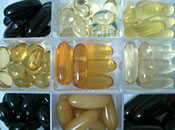 |
Rhodiola Rosea P.E. 5%
3%,4% & 5% Rosavins
Rhodiola rosea, ¡°Golden root¡±, is a popular plant in traditional medical systems in Eastern Europe and Asia with a reputation for stimulating the nervous system, decreasing depression, enhancing work performance, eliminating fatigue, and preventing high altitude sickness.
Rhodiola rosea has been categorized as an adaptogen for physical and mental stamina by Russian researchers due to its observed ability to increase resistance to a variety of chemical, biological, and physical stressors. Its claimed benefits include antidepressant, anticancer, cardioprotective, and central nervous system enhancement. Research also indicates great utility in asthenic conditions (decline in work performance, sleep difficulties, poor appetite, irritability, hypertension, headaches, and fatigue) developing subsequent to intense physical or intellectual strain. The adaptogenic, cardiopulmonary protective, and central nervous system activities of Rhodiola rosea have been attributed primarily to its ability to influence levels and activity of monoamines and opioid peptides such as beta-endorphins. (Altern Med Rev 2001;6(3):293-302)
[Chemical Composition]
Twenty-eight compounds have been isolated from the roots and above-ground parts of Rhodiola rosea, including 12 novel compounds. The roots contain a range of biologically active substances including organic acids, flavonoids, tannins, and phenolic glycosides. The stimulating and adaptogenic properties of Rhodiola rosea were originally attributed to two compounds isolated from its roots, identified as p-tyrosol and the phenolic glycoside rhodioloside known glycoside salidroside. Additional glycoside compounds isolated from the root include rhodioniside, Rosavin, rosarin, and rosiridin. These glycoside compounds are also thought to be critical for the plant's observed adaptogenic properties. Rosavin is the constituent currently selected for standardization of extracts.10
|

